India — a cultural kaleidoscope.
I have been looking forward to visiting India for a long time and for a number of reasons: my love of Indian food, my fascination about the spiritual Hindu religion/tenets, the colorful images of the landscape and people, plus a strong desire to see how a billion people interact, operate and move through life on a daily basis.
I received two types of reactions when I first mentioned I was going to visit India (from people who have visited India) “You will love it” and/or “You will be shocked/disappointed”. I’m looking forward to sharing my thoughts at the end of my picture collage.
India is a photography oasis and with so many pictures taken during my 10 day trip to three cities (Mumbai, Delhi and Agra), I found it very hard deciding which ones to post – I hope you like my selection.
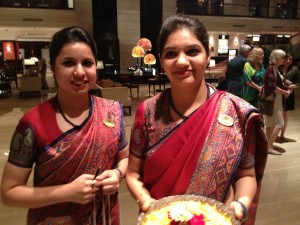
A warm “Namaste” welcome at my hotel. The full Namaste greeting was not captured in this picture (because I felt too touristy to ask them to re-due a sincere act)…Europe and the US traditionally greet friends and family in a physical manner, for example; a kiss on the cheek or a hug when in the US, two kisses alternating cheeks in France, while Indians prefer a non-contact greeting. Saying the word “Namaste” is commonly accompanied by a slight bow made with hands pressed together, palms touching and fingers pointed upwards, in front of the chest. Namaste is a benevolent expression of respect and is performed when meeting and departing. I found this greeting to be very endearing because it was never done in jest or quickly as a formality, it was always sincere and focused at you.
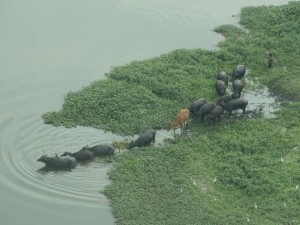
The following are a few views from my hotel room…this is a picture of Powai Lake. Every other morning the water buffalo would take a swim.
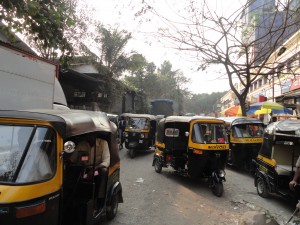
Locals had 4 forms of transportation: Train, rickshaw (known as a tuk-tuk), taxi or car. The two cheapest and most utilized forms of transportation for locals were the trains and tuk-tuks. Here are the black and yellow tuk-tuks of Mumbai.
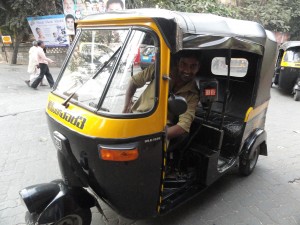
Nadir was my favorite tuk-tuk driver…no haggling on fare, laughed at the traffic and very helpful with directions.
Here are some images of the Mumbai trains and stations. The trains have separate cars for woman and children ONLY (for safety purposes). Woman can ride in the unisex cars but usually when accompanied by a male friend or boyfriend.
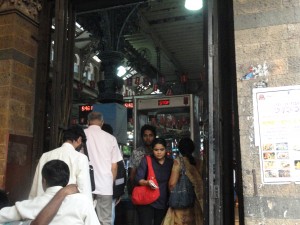
You have to pass through metal detectors at 95% of major historic and religious sites, plus at the major public transportation stations. However, security can be very lackluster and at times with no supervision…as you can see here, going through the metal detector at Mumbai’s largest train station (Victoria) is a personal decision?
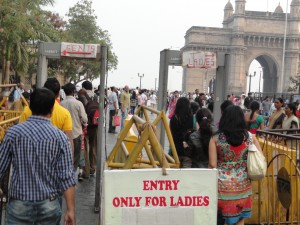
Visiting Mumbai’s historic Gateway to India.
Men (gents) and women are separated during scanning, so female police officers can search the ladies further if alarms go off (normal). However, as I watched the security measures for a few minutes I noticed that when a scanner sounded its alarm the security guards (male or female) would randomly decide to check (or not) the individual who triggered the alarm…aka-profiling was in full effect.
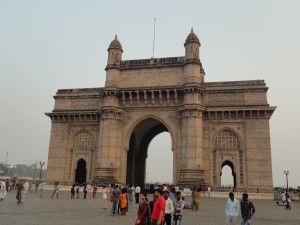
Gateway to India. This Mumbai (formerly Bombay) monument commemorates the landing of their Majesties King George V and Queen Mary in 1911.
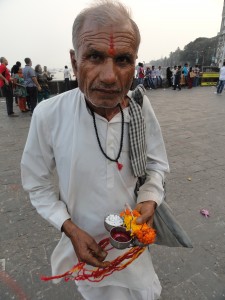
This man was offering me a Tilak ( called a Bindi for a woman). A Bindi / Tilak is a red-dot or marking between the eyebrows that has a few meanings in Hindi; including, letting go of one’s ego or sense of individuality so you can reach the highest level of spirituality. Also, this area of the forehead is considered the sixth chakra known as the “agna” meaning command and the seat of concealed wisdom.
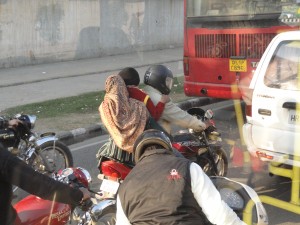
Riding a motorcycle was probably the most dangerous thing to do in India. There was no fear or sense of danger by the drivers or passengers. Passengers piled on with no regard for safety.
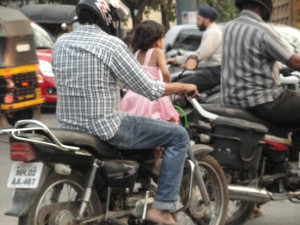
I could only watch for so long hoping this beautiful little girl was not thrown into the street….again, no fear shown by the drivers or children. For many this was their transportation method and the only concern was getting to and from point A and B — all with the mindset that this is life and how we approach it.
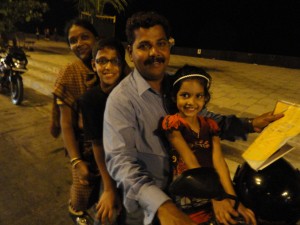
I met this wonderful, sweet family (as you can see). As they all jumped on Dad’s moped, I said please be careful and they smiled and responded “this is how we commute every day, no worries”.
Here were some of my everyday street scenes.
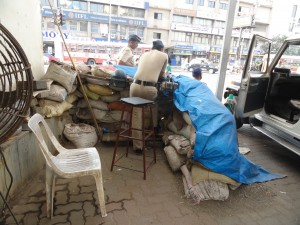
Military presence was everywhere in the streets….It was more of a visual deterrent than a real security shield.
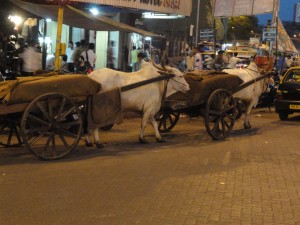
All transportation methods were utilized. To hear Brahman bulls approaching and watch these beautiful, giant creatures work was amazing…people stopped and cars pulled over quickly when too close to these massive animals.
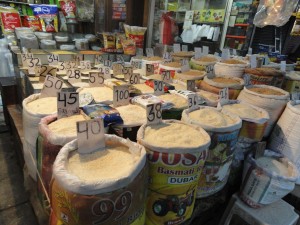
To say India loves rice is a huge understatement — I have never seen or enjoyed so many different varieties of rice!
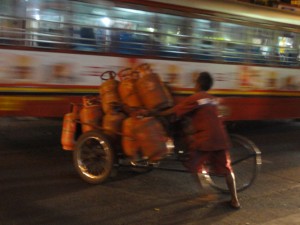
Many milk and propane (yes, propane) delivery personnel walking the streets in between cars and trucks.
Every Indian city I visited showcased countless street food venders and markets selling everything imaginable. Many times I wanted to try the very fragrant, visually appealing and authentic street food, but unfortunately my hyper-hygienic side could never quite mesh with my adventurous “I have to try that” side!
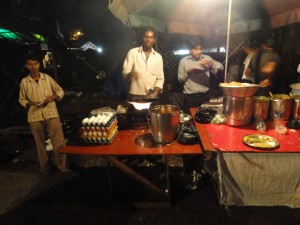
Many street vendors cooked (stir fried) lentils, a vegetable, rice, added spices and a chopped hard boiled egg if you were not vegetarian or vegan. (A large population of Indians are vegetarian and/or vegan).
I wanted to share pictures from Mumbai’s Dhobi Ghat, the world’s largest outdoor laundry. To this day, hospitals, hotels and commercial businesses still send their garments to this well oiled centuries old business. Each concrete pen has its own flogging stone.
The flower markets were beautiful and plentiful throughout every city.
How could one go to India and not pay homage to Mahatma Gandhi.
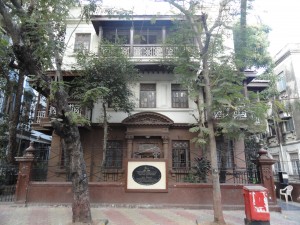
Mahatma Gandhi’s home in Mumbai. The Indian government has done a nice job of transforming Gandhi’s home into a museum. Wonderful pictures, historic timelines, personal relics of his life, third party reflections on his life and what he has meant to India and the world.
Some of my food selections (apologies for the dim lighting)…
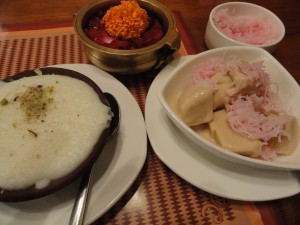
I had a taste testing of two popular desserts one night. I was very impressed with my cardamom “Kulfi” – aka Indian ice cream (on the right)…it has a chewy, more dense texture verse traditional ice cream — and very flavorful.
On route to visit the iconic Taj Mahal.
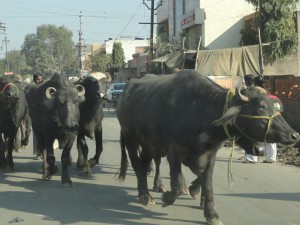
– or water buffalos could deter me from visiting one of the great Wonders of the World in the city of Agra.
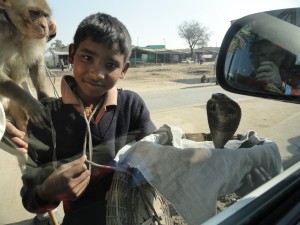
The Taj Mahal is approx 3-1/2 hours south (by car) from Delhi. During toll stops you would be approached by individuals soliciting money and/or giving you an opportunity to take a picture of something unusual (for money)…this young boy’s cobra snake and monkey got my attention and a few rupees.
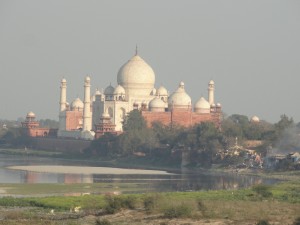
Ahhh we are getting close to the “Jewel of Muslim Art”. It took twenty-two years (1631AD to 1653AD ) to build the Taj Mahal and some have calculated at a cost of close to 1 billion dollars in today’s money.
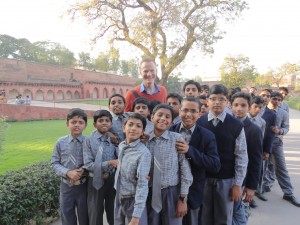
The boys from this private school (girls are in a separate line next to us) approached me in a very unassuming way and asked “can we have our picture taken with you because we do not see a lot of white people”. They were really fun, lots of laughing and joking and trying to impress me and their fellow classmates with their english skills.
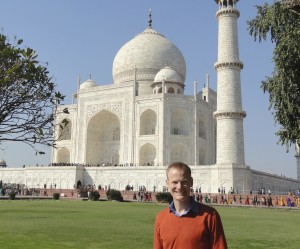
I think its fair to say Emperor Shah Jahan has set the bar pretty high for showing us how to express our love for someone. The Taj was built for the Emperor’s third wife Mumtaz Mahal. Mumtaz Mahal was 38 years old when she died giving birth to her 13th (not a typo) child. The details that Emperor Jahan put into creating this “Crown of Palaces” is overwhelming. Shah Jahan based the Taj’s design on his wife’s wishes and her loves in life. Mumtaz Mahal loved jewels and how they sparkled so the Taj Mahal has millions of rubies, sapphires, and emeralds artfully inlaid into the marble so when the sun hits the structure it glimmers.
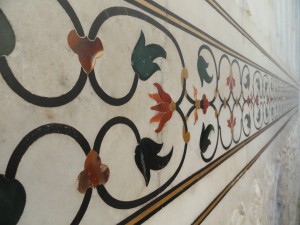
Here is a glimpse of some of the emeralds, rubies and other precious stones inlaid into the marble. I had to take a picture of these jewels on a shaded side of the Taj because the white marble made it too bright for me to see through my camera lens.
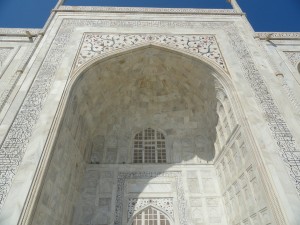
There are many design details and optical illusions that make the Taj Mahal so unique…i.e. the Qur’an inscriptions on the walls (made with jasper or black marble) appear to have the same letter size but when standing closer to the structure you see that the lettering starts off small at the bottom and becomes larger as it moves up the walls.
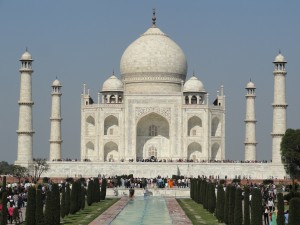
It is said that the Taj Mahal is a message to all mankind that “Pure love is the soul of life”.
I think Noble Laurette Gurudev Rabindranath Tagore’s moving words say it best. Tagore sees and feels Emperor Shan Jahan deep sorrow of great love lost in the Taj Mahal as “A teardrop in the face of eternity”.
As I sit back and think more about my trip to India, I cannot find that perfect one-liner to express my overall experience. When I return from my excursions, my friend Flavia likes to ask me to express in three individual words how I felt about my trip…I was tongue tied after this trip and I struggled in one of those rare moments in expressing my thoughts — which I guess is a statement in and of itself about my trip.
I really enjoyed my on-on-one conversation with the Indian people (e.g. my public transportation comrades, small shop owners, fellow shoppers and restaurant diners, etc.) – they were all very bright, passionate, helpful, engaging and sincere.
I loved all components of my Indian food experience – from confirming traditional favorites to discovering new favorites – conversations surrounding the Indian culinary world and the pride shown by the people making their food come alive.
The colorful fabrics used for the Saris and Punjabi suits worn by the women of India are simply beautiful. Seeing this splash of color throughout the day and night added instant happiness to an environment that is more about surviving than living.
You can see technology is being implemented whenever possible; for example, the underground metro system is really nice – it needs more trains because commutes have become too long with so many stops on individual lines — but the operational aspects and equipment of the system is spot on.
I found very few moments (one or two) of what I refer to as traveler’s peace — a time were you can move throughout your day with a sense of calm that everything is refreshingly new and comfortable, no crazy surprises seem to be on the horizon and you can simply enjoy the fact that you are experiencing another culture with no protective shield up or on — emotionally or physically (strong body language).
During this trip, I always felt I had to be “on” because of the overwhelming begging and solicitations as you walked the streets and entered shops. The constant haggling over prices for all services and products (e.g. taxi fares, bottle of water, etc.) even in the nice hotels you felt pressure to tip with every interaction, or use extra energy in navigating the staff’s recommendation of using “their friends” for services because they would give you a “special deal” — you always felt like you were being worked over.
There was a sensory overload with the poverty factor. I (we) have seen poverty before but this was a different level of poverty, it was something you could not escape by walking around the corner to a new and more western setting of normalcy — this poverty was palpable ( all poverty is) but the scope and depth of this poverty was jolting.
For the second time in my life I felt the uncomfortableness, the uneasiness and pressure of being a minority (China being my first experience). Sure at times, you enjoy the celebrity feeling because of all the attention but those moments are few and far between – like being asked to have your picture taken because it’s rare to see a white person, these moments are easy and fun. Unfortunately, you mainly feel the intense starring from onlookers when walking down the street, or walking into a store, restaurant, public building, train or metro car. You feel and/or experience the room/area go silent because of your entrance – your every move being watched, analyzed and talked about – this is a very strange and uncomfortable because you hear the whispering going on around you, but you don’t know if it is good or bad whispering?
India has many layers and for me, traveling India was a kaleidoscope of emotion — a rational and intellectual tug of war. India needs to be on everyone’s bucket list because India will push you outside of your comfort zone and challenge you on how you see, interpret and interact with individuals who are probably living in a different economical and social world than you.
No other travel experience has made me appreciate Marcel Proust’s very profound quote so much… ” The voyage of discovery is not in seeking new landscapes but in having new eyes”.
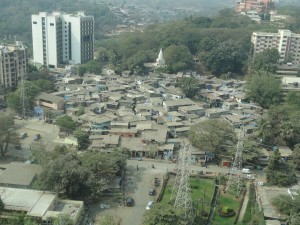
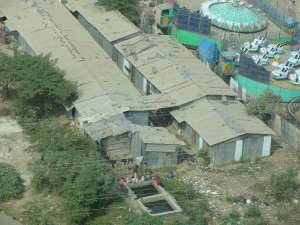
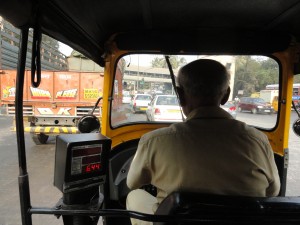
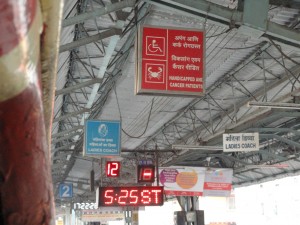
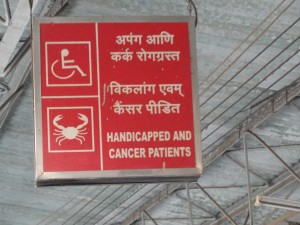
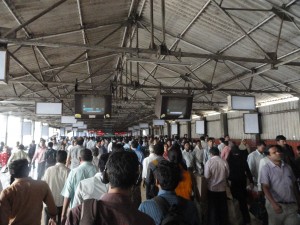
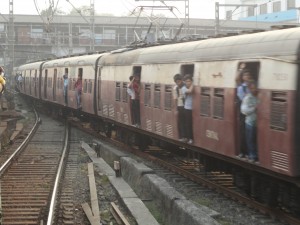
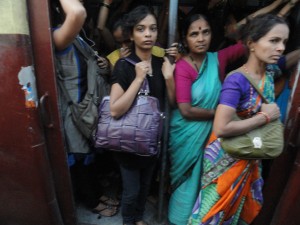
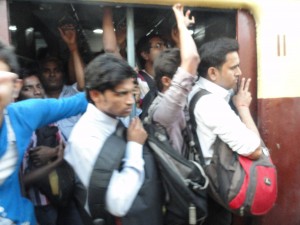
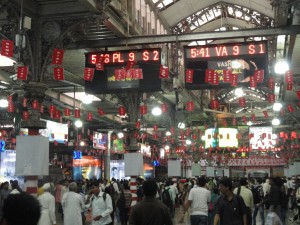
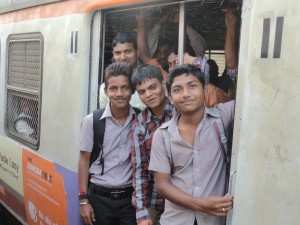
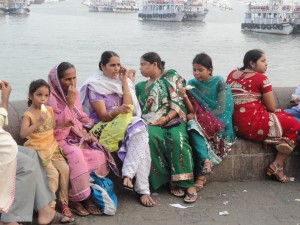
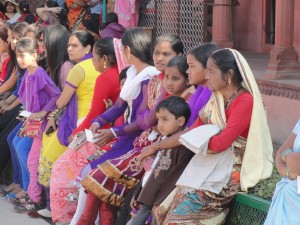
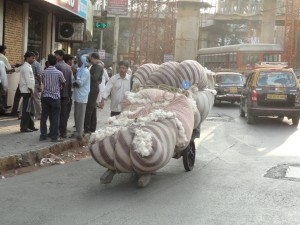
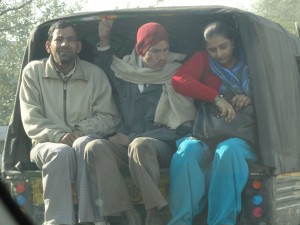
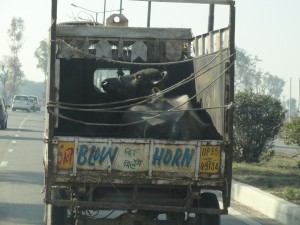
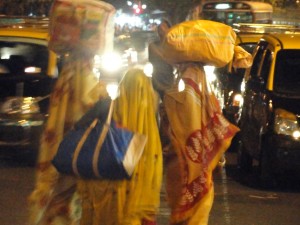
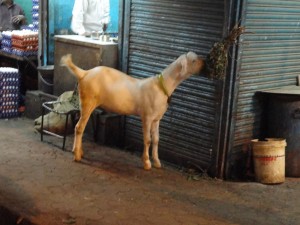
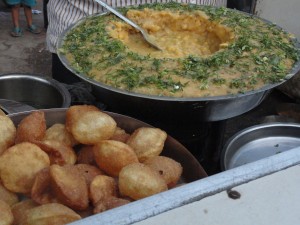
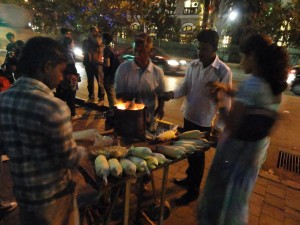
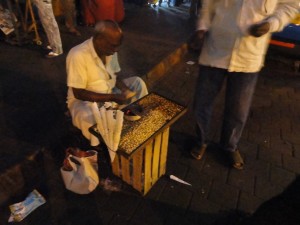
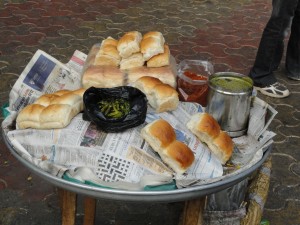
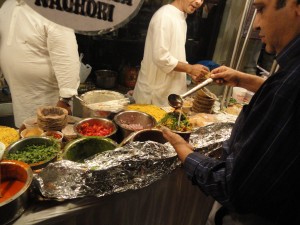
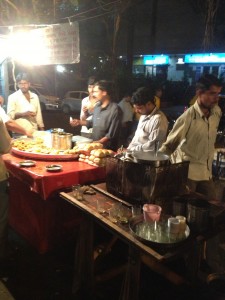
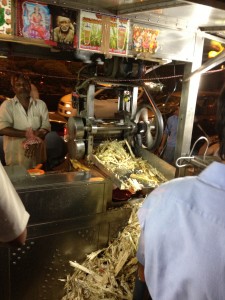
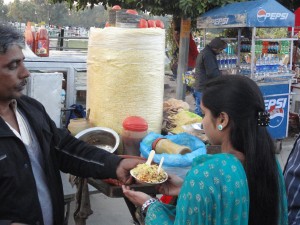
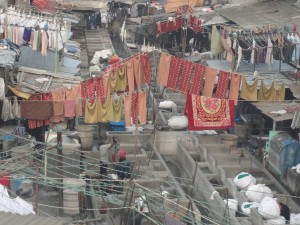
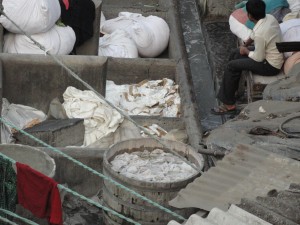
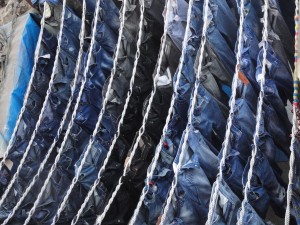
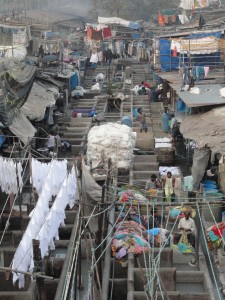
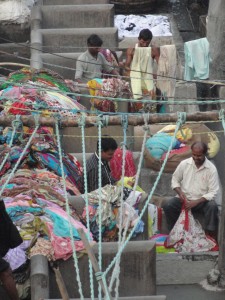
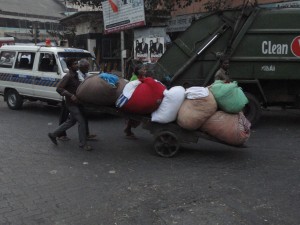
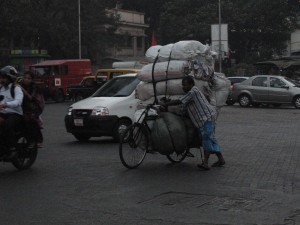
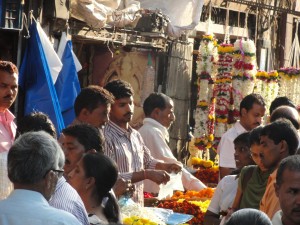
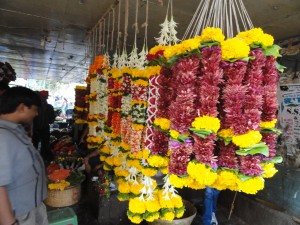
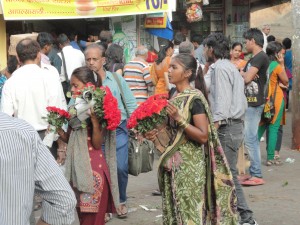
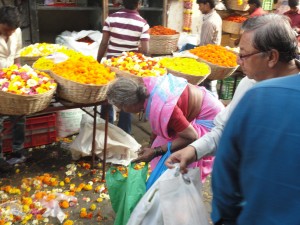
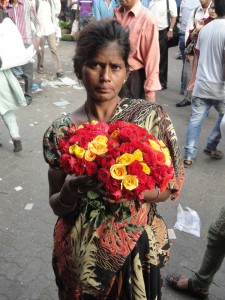
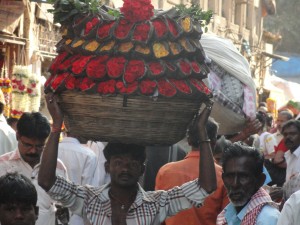
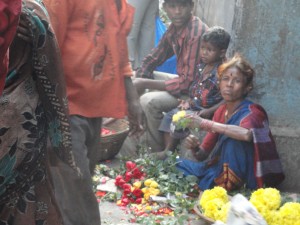
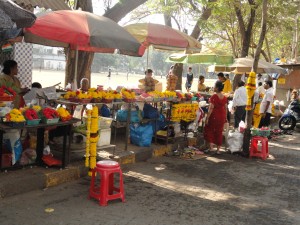
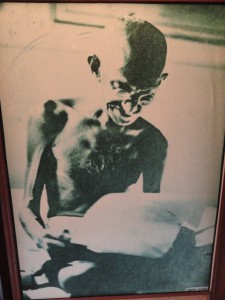
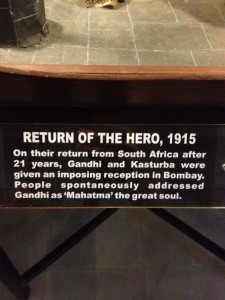
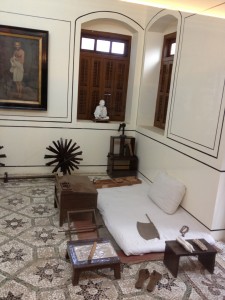
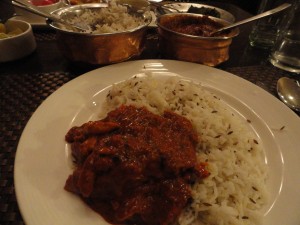
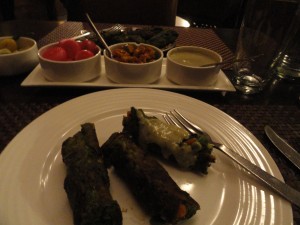
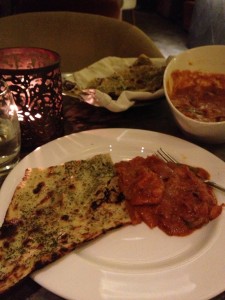
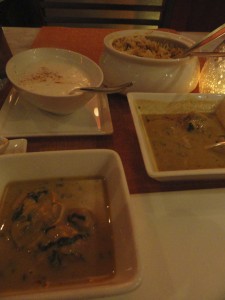
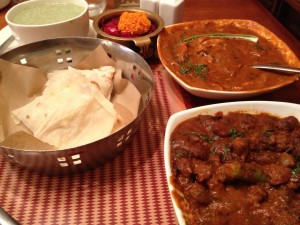
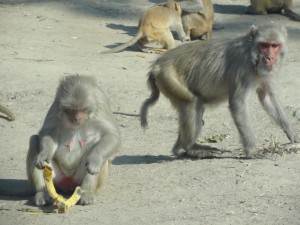
Leave a Reply